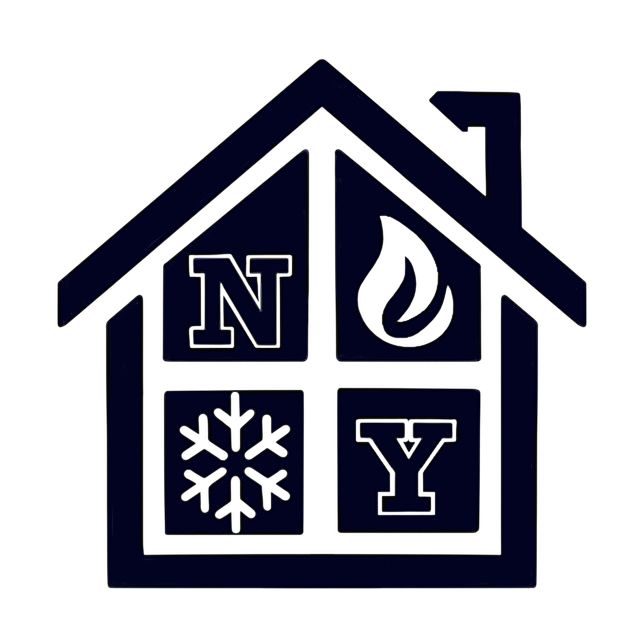What Does an Energy Assessment Include?
- New York Energy Assessments

- Jul 7
- 3 min read
Energy assessments are crucial for homeowners and businesses looking to reduce their energy consumption and costs. These evaluations identify areas where energy is wasted and provide recommendations for improvements. Let’s delve deeper into what an energy assessment includes, its benefits, and why you may want to consider one for your property.
What are Energy Assessments?
Energy assessments are systematic evaluations of a property’s energy use and efficiency. A certified energy auditor carries out these assessments, examining various aspects of your home or business. The auditor reviews heating and cooling systems, insulation levels, and appliances to determine how energy is consumed and identify areas of energy loss.
During the process, the auditor may perform tests such as blower door tests to assess air leaks and thermal imaging to spot insulation issues.

These assessments can range from simple checklists to comprehensive examinations, and the details will depend on the property's size and complexity. The primary goal is to provide you with actionable recommendations that can improve energy efficiency.
Key Components of an Energy Assessment
An energy assessment involves several critical components:
1. Visual Inspection
The auditor will conduct a visual inspection of various elements within your property. They'll check the following areas:
Heating and Cooling Systems: Inspecting the efficiency of HVAC systems and checking for proper maintenance.
Insulation: Evaluating the insulation in walls, attics, and basements to determine its effectiveness in maintaining temperature.
Windows and Doors: Checking for drafts, leaks, and overall efficiency of sealing.
2. Blower Door Test
One of the most important tests in an energy assessment is the blower door test. This involves sealing the home and using a fan to measure how much air leaks in or out. The results reveal the air-tightness of the home, helping to identify problem areas.
3. Thermal Imaging
Thermal imaging technology allows auditors to see temperature differences in walls, ceilings, and floors. This inspection helps locate hidden leaks and inadequate insulation, providing a visual representation of energy loss.

4. Appliance Evaluation
The efficiency of your appliances plays a significant role in overall energy consumption. During the assessment, auditors will review your appliances for energy ratings and usage. They'll provide recommendations for energy-efficient models where necessary.
5. Energy Consumption Analysis
The auditor will analyze your energy bills for patterns and trends. This analysis helps to identify when energy consumption is highest and any spikes that may indicate inefficient use. This data provides a clear picture of how energy is utilized throughout the year.
Are Energy Assessments Worth It?
Investing in an energy assessment can be highly beneficial, both financially and environmentally.
Financial Benefits
An energy assessment can uncover significant savings. According to the U.S. Department of Energy, homeowners can save an average of 15%-30% on their energy bills by implementing the recommendations from an energy audit. The cost of the assessment is typically recouped within the first year due to these savings.
Environmental Impact
Reducing energy consumption not only saves money but also lessens your carbon footprint. By increasing energy efficiency, you contribute to environmental sustainability and help combat climate change.
Increased Comfort
An energy assessment can also enhance your comfort at home. By sealing leaks and improving insulation, your home will maintain a more consistent temperature, making it more comfortable year-round.
Practical Steps After an Energy Assessment
Once you complete your energy assessment, it's essential to take action based on the auditor's recommendations. Here are some practical steps you can follow:
1. Seal Air Leaks
Sealing air leaks with weather stripping, caulking, or spray foam can significantly reduce energy costs. This step can make your home more comfortable by eliminating drafts.
2. Upgrade Insulation
If your assessment reveals inadequate insulation, consider upgrading it. Insulating areas like attics and walls will help reduce heating and cooling costs.
3. Replace Inefficient Appliances
If your appliances are outdated and consume more energy than necessary, consider replacing them. While the upfront cost can be significant, the long-term savings on energy bills will be worth it. Also, look for ENERGY STAR-rated products for better efficiency.
4. Consider Renewable Energy Sources
If you’re open to it, explore options for renewable energy sources such as solar power. An energy assessment can provide you with information on the feasibility of integrating these technologies into your property.
Final Thoughts on Energy Assessments
Energy assessments provide valuable insights into your property's energy use, showcasing areas where you can improve efficiency and save money. Whether you’re a homeowner or a business owner, the benefits of understanding your energy consumption can't be overstated. If you are looking for a solution, consider exploring options for an energy assessment near me.
Being proactive with energy efficiency not only leads to substantial savings but also contributes positively to the environment. Taking just a few steps based on the auditor’s recommendations can lead to a more comfortable, eco-friendly, and cost-effective space. Embrace the opportunity to enhance your property's energy efficiency today!




Comments